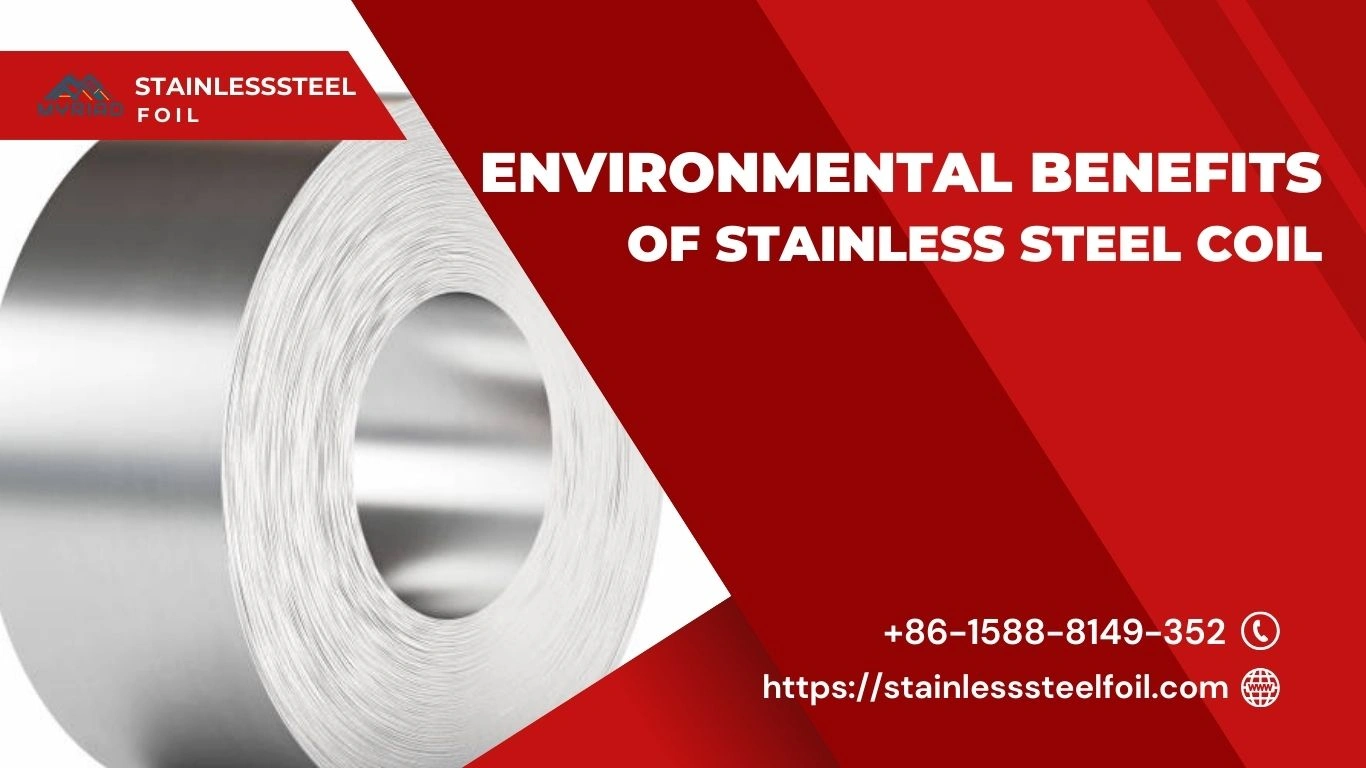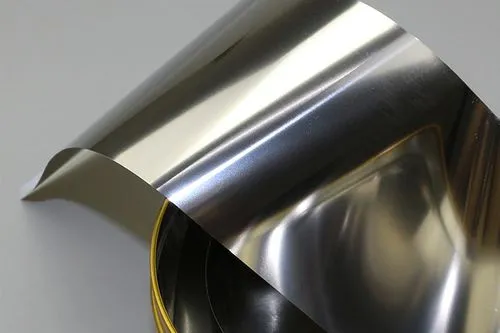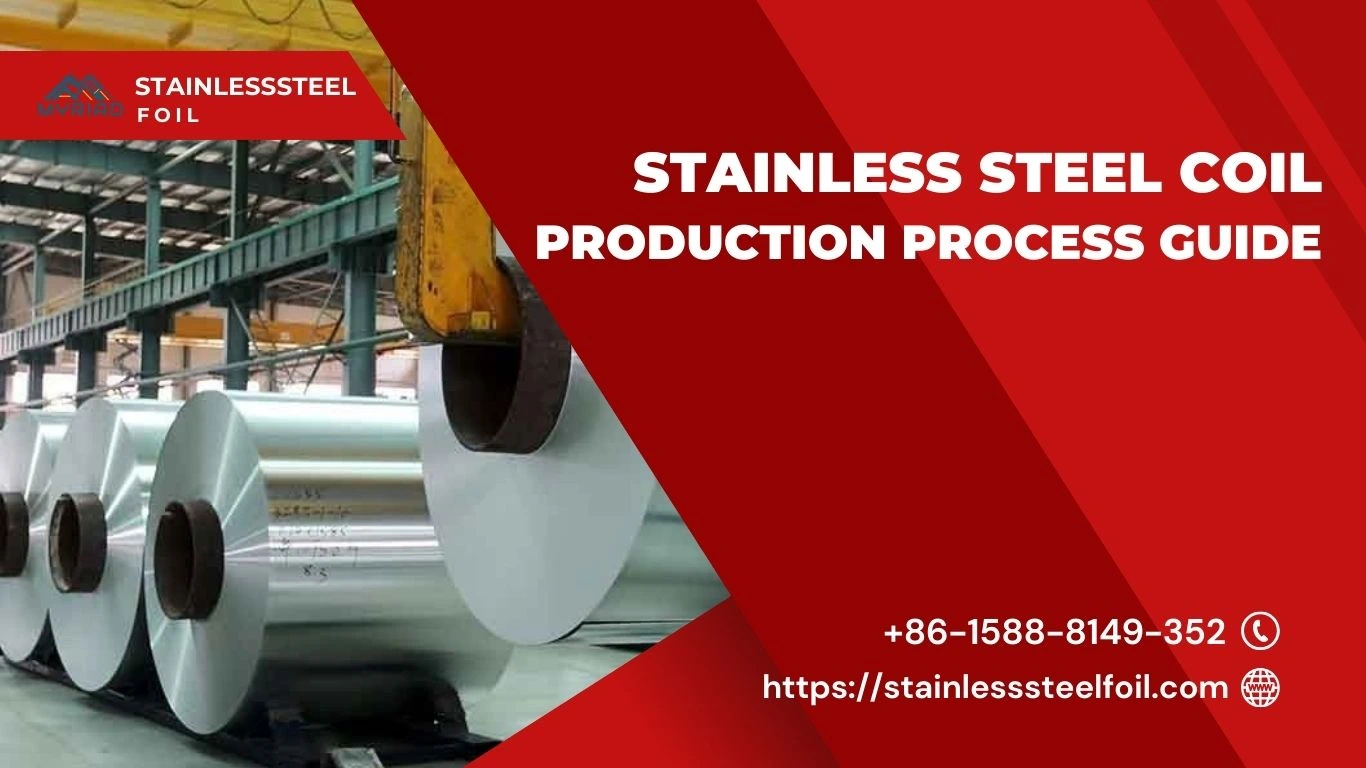
Environmental Benefits of Stainless Steel Coil
Stainless steel coil is widely used in construction, automotive manufacturing, food processing, medical equipment, energy systems, and sustainable architecture. Its

Where does tin foil come from? A seemingly simple question unravels into a fascinating journey that dives deep into the core issues of mining, manufacturing, economics, environment, and social considerations. From the depths of the earth to the kitchen drawer, the story of tin foil is intricate and far-reaching. This article delves into five essential perspectives that collectively answer the question and invite you to explore the hidden complexities of an everyday item we often take for granted. Join us in uncovering the extraordinary tale of tin foil’s creation and its profound impact on our world.
The question of where tin foil comes from seems simple, yet it leads us to a deep and intricate exploration of five essential perspectives. These lenses provide a comprehensive view of this everyday item, delving into the world of mining, manufacturing, economics, environmental effects, and social considerations.
Tin is found in several parts of the world. Asia and South America are rich in tin ore. Countries like China and Brazil play key roles in its mining.
Mining tin is a complex task. First, the ore must be located and dug from the earth. Next, it’s refined and processed to remove impurities.
Often, the work in mines is hard and risky. Laws may not always protect the miners. Fair wages and safe conditions are big issues in some areas.
Mining can bring jobs and wealth to a region. But it may also harm the land and water. This balance between gain and loss is vital to local people.
The need for tin is global. So is its effect on the world. Prices, politics, and even peace can hinge on this metal.
Laws control mining in many lands. These laws must be just and fair. They must protect both people and the earth.
Mines can harm nature. They may pollute water and air. Good practices must be used to keep the earth safe.
Tin mining fuels economies. It creates jobs and wealth. Yet, it must be balanced with other needs and goals.
New tools and machines make mining safer and better. They allow us to find and use tin in ways that were once hard or even impossible.
Tin will be needed for years to come. How we mine it, where we find it, and what it means to our world are questions we must keep asking.
From ore to foil, the path is long and complex. The tin must be refined, melted, and rolled. Each step must be done with care and skill.
Tin foil is made with big machines. These machines heat, roll, and cut the tin into thin sheets. They must be run by skilled workers.
Making tin foil takes precision. Each roll must be thin but strong. Tests and checks ensure each piece meets the right standards.
Machines need power. This energy can come from many sources. Some are clean and green, others not. The choice of power affects our earth.
Waste, water, air – all are touched by making tin foil. Good practices must be used to keep them safe and clean.
Factories give jobs and wealth. They can lift a town or even a nation. Yet, they must also pay fair wages and follow just rules.
Tin foil touches many lives. It’s in our homes and stores. How it’s made matters to us all. It tells a story of our world and our values.
New tools and ways are always being found. They make tin foil better and cheaper. They also may make it greener and more just.
Tin foil is used around the world. It crosses borders and seas. Laws and deals must guide this flow. They must be fair to all.
What will tin foil be like in years to come? Will we make it in new ways? Will we even need it at all? These are questions that time will answer.
The market for tin is vast. It’s shaped by supply, demand, and politics. Prices can change fast, touching lives and lands far from the mine or mill.
Tin is traded across the globe. Laws and pacts guide this trade. They must be fair and just, both to people and nations.
Mines and mills boost local wealth. They bring jobs and growth. But they must be run with care for the land and its people.
Tin is a key metal in our world. It’s used in many ways. Its ups and downs can ripple through the global economy.
Can we mine and make tin in ways that last? Can we balance wealth with care for our earth? These questions guide our path.
People buy tin foil for many reasons. Price, quality, and brand all play a part. So do ideas of green and fair trade.
New tools change how we mine and make tin. They can cut costs or boost quality. They can also open new paths to wealth and well-being.
Mines and mills need money to run. Loans, stocks, and bonds all play a part. So do ideas of risk and reward.
We must mine and make tin with care for all. This means fair wages and safe jobs. It means laws that serve both rich and poor.
What will the tin market be like in the future? Will new lands or tools change the game? Will new needs or dreams shape our path? The future holds these answers.
Mining tin can harm our earth. It may scar the land or taint the water. We must mine with care and wisdom.
Making tin foil can pollute the air and water. Good rules and practices are key. They keep our earth safe and clean.
Machines need power. This power may come from fossil fuels. Or it may come from the sun or wind. The choice affects our earth.
Tin foil can be thrown away or recycled. This choice shapes our world. Recycling is a path to a cleaner, greener future.
Water is used to make tin foil. This water must be clean and safe. It must be used with care, for it’s a gift we must not waste.
Mines and mills may harm animals and plants. We must build and run them with care for all life on earth.
Laws guide how we mine and make tin foil. These laws must be just and wise. They must serve both people and our planet.
Can we mine and make tin in ways that will last? Can we find a path that is both rich and right
? These questions shape our course.
Mines and mills touch many lives. They must listen to the voices of the people. They must build trust and work with care.
What will be the future trials of mining and making tin? Will we find new ways to harm or heal our earth? Time will tell, and we must watch and learn.
Mining can change a town or a land. It brings both hope and fear. It can lift lives or break them. Its power is vast.
People mine and make tin foil. They need fair pay and safe work. Laws and leaders must protect them.
Mines and mills are part of a place. They must fit the needs and dreams of the people. This means talking, trusting, and trying together.
Right and wrong touch all we do. How we mine and make tin foil is no less. We must choose paths that are just and true.
Mines and mills can be risky. They must be run with care for all. This means rules that guard both body and soul.
People must know the tale of tin. They must learn its joys and fears. This knowledge is a guide to a better, wiser world.
Tin foil is part of our daily life. Its story touches our art and song. It’s a symbol of our age, with lessons to teach.
We all use tin foil. How we buy and use it shapes our world. We must choose with care, guided by values and vision.
Leaders and laws guide our path. They must be wise and just. They must serve the common good, with care for all.
What will the future bring to the world of tin? Will we find new ways to live and grow? Will we learn lessons that make us better and wiser? The answers lie ahead, waiting for us to find.
The journey of tin foil from the depths of the earth to our kitchen drawers is a complex and multifaceted story. It unravels through various perspectives that encompass mining, manufacturing, economics, environmental concerns, and social aspects. Each perspective adds a layer of understanding, enriching our appreciation for this seemingly simple product.
Through careful analysis and contemplation, we can recognize the interconnectedness of global systems and local lives. Our relationship with tin foil is not merely a transaction; it is a reflection of our values, decisions, and our collective responsibility to our planet and each other. The story of tin foil is our story, a narrative that continues to unfold as we shape our future.
Learn more about the:The stainless Steel Foil Provided With High Quality and Best Price
Read more: How to Find the Best Deals on 316 Stainless Steel Foil Price
Get more: How to Choose the Right Thickness of 304 Stainless Steel Foil for Your Application
Read on: yaoyi stainless steel foil

Stainless steel coil is widely used in construction, automotive manufacturing, food processing, medical equipment, energy systems, and sustainable architecture. Its

Stainless steel coils are the backbone of countless modern industries. From architecture and automotive manufacturing to medical equipment and energy